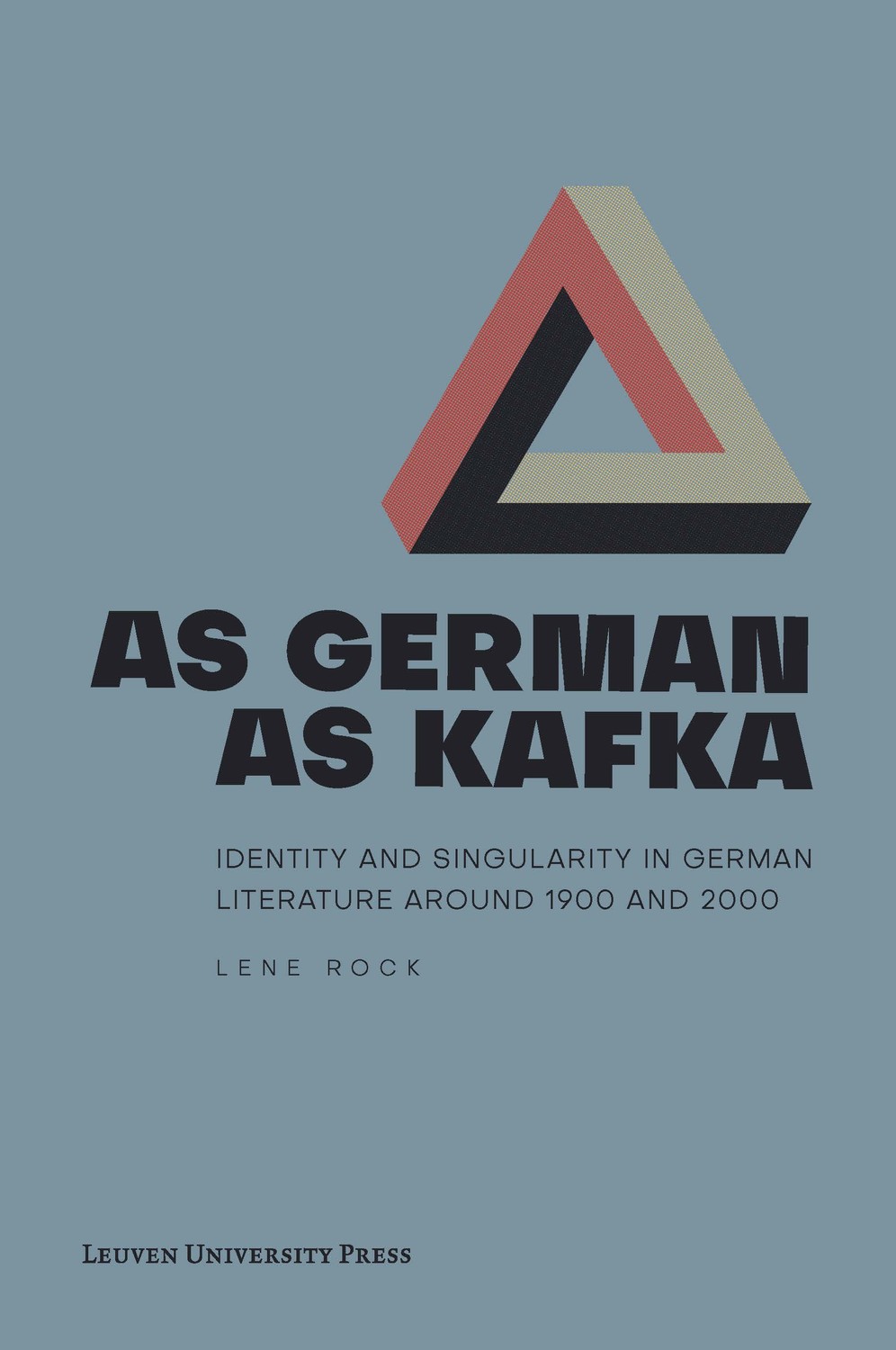
As German as Kafka
Identity and Singularity in German Literature around 1900 and 2000
Lene Rock
Regular price
€0.00
Sale
Monograph - free ebook - PDF
VIEW Monograph - free ebook - ePUB VIEW Monograph - paperbackThe first extensive comparison of the German-Jewish literary corpus and contemporary minority writing in German
Since the turn of the 21st century, countless literary endeavors by 'new Germans' have entered the spotlight of academic research. Yet 'minority writing', with its distinctive renegotiation of traditional concepts of cultural identity, is far from a recent phenomenon in German literature. A hundred years previously, the intense involvement of German-Jewish intellectuals in cultural and political discourses on Jewish identity put a clear stamp on German modernism. This book is the first to unfold literary parallels between these two riveting periods in German cultural history. Drawing on the philosophical oeuvre of Jean-Luc Nancy, a comparative reading of texts by, amongst others, Beer-Hofmann, Kermani, Özdamar, Roth, Schnitzler, and Zaimoglu examines a variety of literary approaches to the thorny issue of cultural identity, while developing an overarching perspective on the ‘politics of literature’.Ebook available in Open Access.
This publication is GPRC-labeled (Guaranteed Peer-Reviewed Content).
Acknowledgements
Introduction
Chapter 1
Constitutive outsiders
1.1 Ambivalences of Kultur and Aufklärung
Constructions of German identity
Kultur versus Zivilisation
1.2 “Trapped
by the image of a rejected self ”—Jews in Germany, German Jews
Emancipation and acculturation (1770–1880)
Modern anti-Semitism and Jewish dissimilation (1880–1933)
The ambivalence of assimilation 50
1.3 A
reluctant country of immigration
From emigration to immigration
Kultur in the aftermath of non-policy: MultiKulti—Leitkultur—‘Deutschland
schafft sich ab’
1.4 Literature, identity, and singularity
Chapter 2
Aesthetes between identity and opposition 67
2.1 The authenticity paradox—Writing between identity and opposition
2.2 The
aesthete’s retreat: Arthur Schnitzler’s Fräulein Else (1924) versus
Navid Kermani’s Kurzmitteilung (2007)
The ‘value’ of cultural difference: Arthur Schnitzler and Navid Kermani
A conflict of codes: ‘aesthetics of opposition’ versus ‘aesthetics of identity’
2.3 The
aesthete’s awakening: Beer-Hofmann’s Der Tod Georgs (1900) versus
Zaimoglu’s Liebesbrand (2008) 102
Jewish aesthete and romantic rebel: Richard Beer-Hofmann and Feridun Zaimoglu
Realitätsablehnung & experiences of finitude
Aesthetics of becoming—The ambivalent rhetoric of blood
Conclusion
Chapter 3
City dwellers between difference and indifference
3.1 Images
of the city: emancipatory visions and spatialized difference
Berlin: image of an unsettled national identity
Indifference to difference
The city as a site of Jewish self-definition
Urban stereotype and spatialized difference
3.2 The
failure of exemplarity—‘Figures of immanence’:Ludwig Jacobowski’s Werther,
der Jude (1892) versus Terezia Mora’s Alle Tage (2004)
Exemplarity, identification, alienation
‘Figures of immanence’: the atomic individual versus the Leerstelle
Metropolitan milieus: ‘the law of the proper’ versus Verletzbarkeit
3.3 Disoriented city dwellers—Figures of ‘distanced proximity’:
Franz
Hessel’s Spazieren in Berlin (1929) versus Emine Sevgi Ozdamar’s “Der
Hof im Spiegel” (2001)
Reading the city
Disoriented/dis-Oriented city dwellers
Conclusion
Chapter 4
Family heroes between myth and storytelling
4.1 Writing in the shadow of an empire
4.2 Family heroes redefined: Joseph Roth’s Radetzkymarsch (1932) versus Dimitre Dinev’s Engelszungen (2003)
Storytellers
between empires and nations:Joseph Roth and Dimitre Dinev
“Listening to the same story”—Heroic grandfathers and the power of fiction
“Against the confines of the image”—Un-/antiheroic grandsons and the power of
storytelling
4.3 “Diaspora’s
children”—Heroics of endurance and hope:
Joseph Roth’s Hiob (1930) versus Zsusza Bank’s Der Schwimmer (2002)
Between East and West—Between pathos and hope: Joseph Roth and Zsuzsa Bank
Communities of violence—Communities of silence
Allowing something to be said—Hope emerging from silence
Conclusion
Conclusion
The fallibility of Bildung
Notes
Introduction
Chapter 1: Constitutive outsiders
Chapter 2: Aesthetes between identity and opposition
Chapter 3. City dwellers between difference and indifference
Chapter 4. Family heroes between myth and storytelling
Conclusion: The fallibility of Bildung
Bibliography
Format: Monograph - free ebook - PDF
370 pages
ISBN: 9789461662842
Publication: December 12, 2019
Languages: English
Download: https://library.oapen.org/handle/20.500.12657/23623
